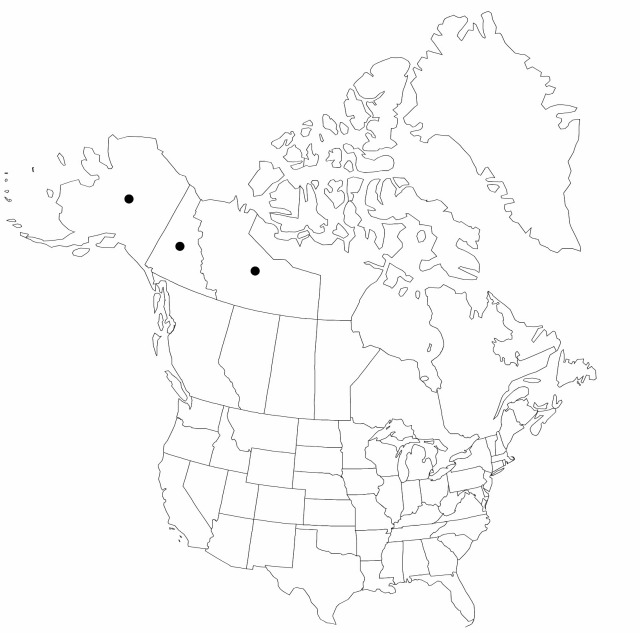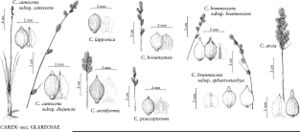Difference between revisions of "Carex bonanzensis"
Bull. New York Bot. Gard. 2: 160. 1901.
imported>Volume Importer |
imported>Volume Importer |
||
| Line 53: | Line 53: | ||
|publication year=1901 | |publication year=1901 | ||
|special status=Illustrated | |special status=Illustrated | ||
| − | |source xml=https:// | + | |source xml=https://bitbucket.org/aafc-mbb/fna-data-curation/src/2e0870ddd59836b60bcf96646a41e87ea5a5943a/coarse_grained_fna_xml/V23/V23_562.xml |
|genus=Carex | |genus=Carex | ||
|section=Carex sect. Glareosae | |section=Carex sect. Glareosae | ||
Latest revision as of 21:41, 5 November 2020
Plants loosely cespitose; rhizomes short. Culms erect, stiff, 20–50 cm. Leaves: sheaths pale brown abaxially, inner band hyaline, conspicuously red tinged, concave at summit; ligules as long as broad; blades pale to bluish green or gray-green, flat, 10–25 cm × 2–3 mm, shorter than culms, thin. Inflorescences 2–4(–6) cm × 5–10 mm; proximal bracts prolonged, subequal to spikes, distal bracts scalelike. Spikes 5–8, gynecandrous, proximal 2 or 3 spikes 1 cm or less apart, distal approximate, containing 10–20 perigynia, oblong, 5–14 × 3–5 mm; terminal spikes staminate for less than 1/2 length, scarcely clavate. Pistillate scales brown with pale green center and narrow hyaline margins, broadly ovate, much shorter than perigynia, apex obtuse. Perigynia appressed-ascending, pale brown or brown, several-veined, elliptic-obovate, 1.5–2 × 1 mm, widest near middle, membranous; beak short, entire. Achenes yellow-brown, elliptic, 1–1.25 × 0.8 mm, dull to slightly glossy. 2n = 60 (Chukotka Peninsula).
Phenology: Fruiting Jun–Aug.
Habitat: Wet, boggy tundra, mostly lowlands
Elevation: 50–900 m
Distribution

N.W.T., Yukon, Alaska, ne arctic Asia.
Discussion
Selected References
None.
